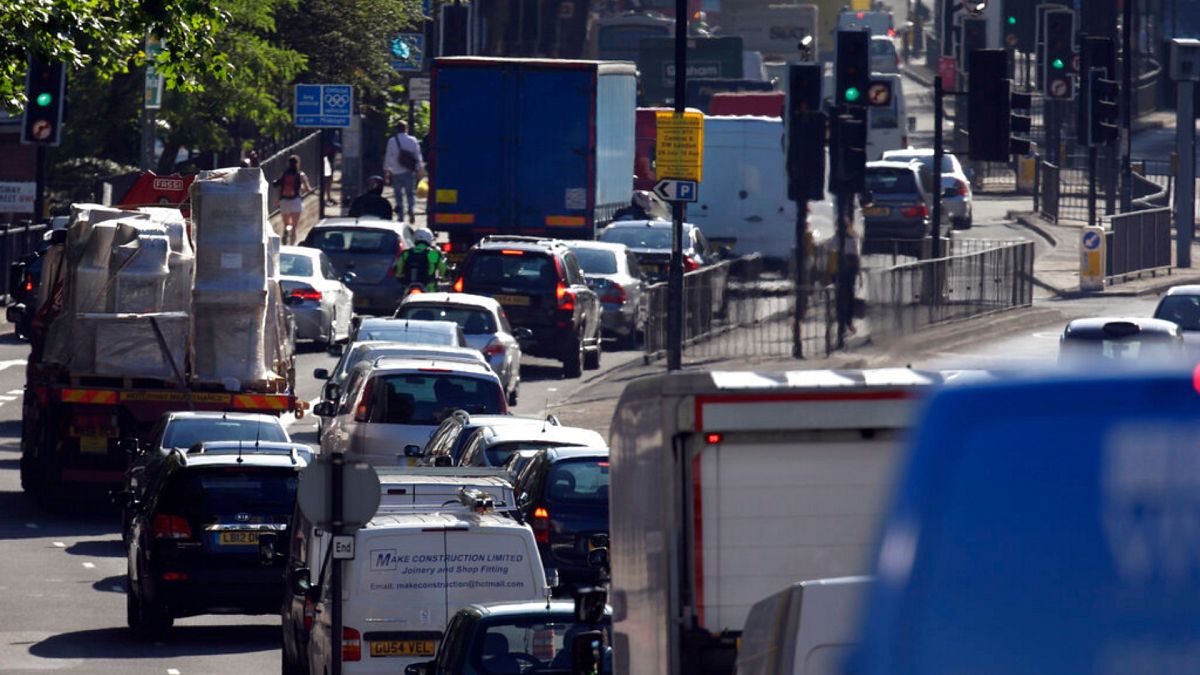Travel
Drivers lose 101 hours a year in Europe’s most congested city

The Cost of Traffic Jams in Europe’s Most Congested City
Traffic jams are a daily struggle for millions of people around the world, and Europe is no exception. In 2023, London was once again named the most congested city in Europe, marking the fourth consecutive year it has held this title. According to a report by traffic analytics firm Inrix, the city’s drivers lost an average of 101 hours stuck in traffic, while the overall cost of congestion reached £3.85 billion (€4.64 billion), or £942 (€1,135) per driver. This staggering figure highlights the significant financial and time-related burden that traffic jams place on individuals and the economy.
London’s Congestion Crisis: A Closer Look
London’s traffic woes are not just a local issue but a global problem, as the city also ranks as the fifth most congested in the world. Inrix’s 2024 Global Traffic Scorecard reveals that London accounts for roughly half of all traffic delays in the UK, making it a hotspot for congestion. The report points to the city’s high population density, employment opportunities, and economic activity as key factors contributing to its traffic challenges. "While the UK did see a slight increase in congestion again this year, overall congestion has remained steady," notes Bob Pishue, a transportation analyst and author of the report. This suggests that while traffic conditions are not worsening dramatically, they remain a persistent problem for commuters.
One of the main bottlenecks identified in the report is the M25 Wisley Interchange, a critical route into the capital. Roadworks in this area caused significant delays, underscoring the vulnerability of London’s transportation network. Despite London’s dominance in congestion, Pishue highlights that cities outside the capital experienced the UK’s biggest increases in traffic issues. This indicates that the problem is spreading beyond London, with other urban areas facing growing challenges.
The Economic and Human Impact of Congestion
The financial toll of traffic jams is staggering, but the human impact should not be overlooked. Across the UK, drivers spent an average of 62 hours stuck in traffic last year. For Londoners, this number jumps to 101 hours, meaning they lose nearly four and a half days of their lives each year to congestion. This lost time translates into reduced productivity, increased stress levels, and a lower quality of life for commuters.
The economic consequences are equally severe. Congestion not only costs drivers money but also affects businesses, as deliveries are delayed, and employees are less productive due to lengthy commutes. The £3.85 billion lost to traffic in London alone is a stark reminder of the need for sustainable solutions to ease the strain on the city’s roads.
Europe’s Most Congested Cities: A Regional Perspective
While London takes the top spot for congestion in Europe, other major cities also struggle with traffic jams. Paris, France, comes in second, with drivers spending 97 hours stuck in traffic annually. Dublin, Ireland, ranks third with 81 hours of delays, followed by Rome (71 hours) and Brussels (74 hours). These numbers reflect the broader challenges of urbanization and the concentration of economic and social activity in Europe’s capital cities.
The rankings are determined not only by the length of delays but also by the number of people affected. This weighting emphasizes the significant impact that traffic congestion has on urban populations and economies. For instance, the 101 hours lost by London drivers each year are not just a personal inconvenience but also a collective cost that affects the entire city.
Addressing the Crisis: Efforts to Reduce Congestion
Transport for London (TfL), the local government body responsible for the city’s transportation network, is working to address the congestion crisis. TfL manages a network of "red routes," which are major roads that carry approximately a third of London’s traffic. These routes are critical to keeping the city moving, as they prohibit stopping, parking, or loading/unloading, ensuring a smoother flow of traffic.
A spokesperson for TfL emphasized the organization’s commitment to improving mobility in London: "We support the movement of everyone across London, and our investment in walking, cycling, and public transport is making it easier to choose sustainable ways of traveling, helping to cut congestion." These efforts aim to reduce reliance on private vehicles and promote cleaner, more efficient modes of transportation.
Despite these initiatives, climate charity Possible criticized the lack of progress in reducing congestion. The charity pointed out that London’s traffic jams are not just a nuisance but also a significant environmental and health concern. "This is a nightmare for the climate, Londoners’ health, and the economy," the charity wrote on social media. "We need to be bolder in getting people walking, cycling, and using public transport."
The Way Forward: Sustainable Solutions for a Congested Future
The issue of traffic congestion is complex and multifaceted, requiring a combination of innovative solutions and policy changes. While investments in public transport, cycling, and walking infrastructure are crucial, addressing the root causes of congestion—such as population growth and urbanization—will also be essential.
As cities like London continue to grow, the need for sustainable and efficient transportation systems becomes even more urgent. By prioritizing cleaner modes of transport and reducing reliance on private vehicles, cities can mitigate the environmental and economic costs of congestion. At the same time, policymakers must work to address the underlying factors contributing to traffic jams, such as urban sprawl and inadequate infrastructure.
Ultimately, the challenge of congestion is not just about moving people from one place to another; it is about creating livable, sustainable cities where residents can thrive. By embracing bold solutions and fostering a shift in how people move, cities like London can reduce the burden of traffic jams and build a better future for generations to come.